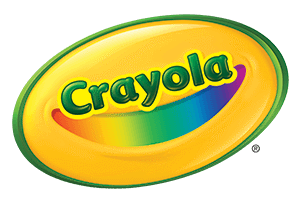Crayola® Crayons are made using primarily paraffin wax and colour pigment. While the basic ingredients remain consistent across all colours, variations may occur in special effects crayons.
Our crayons are crafted through a process that involves melting paraffin wax and blending it with colour pigments. This mixture is then poured into molding machines where it solidifies in four to seven minutes. For a behind the scenes look of the Crayola Crayon manufacturing process, check out our video, You’ve Got Crayola Crayons.
Do you offer helpful hints when selecting a Colors of the World skin tone and undertone?
What are skin tones?
Your skin tone is the genetic amount of melanin, naturally occurring dark brown or black pigments, in the outermost layer of your skin. Skin tones can change over time for various reasons.
What is your skin tone?
There are 3 traditional skin tones: Light, Medium, and Deep.
- Light or fair skin tone: Contains a small amount of melanin within the skin.
- Medium skin tone: Contains a fair amount of melanin within the skin, is a neutral colour, and has a beige appearance. This skin tone is often referred to as an “olive” colour.
- Deep skin tone: Contains a large amount of melanin within the skin.
What are undertones?
Undertones are the natural colours underneath the surface of your skin. Because undertones are under the surface of the skin, you can have the same skin tone as another person, but have a completely different undertone. Undertones are not based on skin tone. For instance, a light skin tone can have a warm undertone and a deep skin tone can have a cool undertone. Also, undertones remain the same, even when you tan. There are 3 traditional undertones: Rose, Almond, and Golden.
- Pink, blue, and/or red hues under the skin = Rose, pink or cool undertone
- A mixture of warm and cool hues typically the same colour as your skin tone = Almond, neutral or olive undertone
- Peach, yellow, and/or gold hues under the skin = Golden or warm undertone
What is your undertone?
You can identify your undertone by using the colour of your veins. In natural light, what colour are the veins under your skin on the inside of your arm or wrist?
- Blue and/or purple veins = Rose or cool undertone
- Colourless, same colour as your skin, and/or a combination of blue and green veins = Almond or neutral undertone
- Green and/or olive veins = Golden or warm undertone
Tips for selecting your Colors of the World skin tone crayon colour:
- Check out the colour panels on the side of the Colors of the World crayon box.
- Match: Use crayon box colour panels or create colour swatches.
- Select: Pick colours closest to your skin tone.
- Colour: Draw your #TrueSelfie with your unique colours!
Another way to find your skin tone crayon is to colour a small area on a piece of paper with the crayon colours closest to your skin tone. Compare the areas with the inside of your arm or wrist, and select the crayon colour that best matches your skin tone.
Popular Questions
The right paint makes all the difference! Although all three types of Crayola® paint products are water-based, they aren’t all created alike. Check below to see what type of paint will work best for your next masterpiece.
- Crayola Portfolio Series™ Acrylic Paint and Crayola Acrylic Paint is permanent and somewhat lightfast on many different surfaces. They are generally used by adults and older children because of their permanence.
- Crayola Premier™ Tempera Paint is permanent on paper surfaces. One coat coverage is all you need! It is generally used by adults and older children because of their permanence.
- Crayola Tempera Paint is generally used by older children. It is an excellent choice for educators due to its superior mixability and blending of colors.
- Crayola Artista II® Washable Tempera Paints offers the same superior mixability and blending of colours as Crayola Tempera Paint, but in a formula that is washable from most launderable clothing and skin.
- Crayola Washable Paints are typically used by younger children because of their washability from most launderable clothing and skin. They are neither permanent nor lightfast.
Crayola Canada’s community relations program supports non-profit organizations located across Canada, with an emphasis on the arts and education.
How To Apply
Requests for donations must be submitted on your organization’s letterhead with your contact information by email, or mail. If sending your request by email, you will receive an automatic reply acknowledging that your email has been received. If you do not receive this confirmation within 5 business days, please call Amanda Pascoe at Crayola Canada.
Email:apascoe@crayola.com
Phone Number: 1−705−212−4399
Mailing Address:
Crayola Canada
Donations Department
P.O. Box 120
15 Mary St. West
Lindsay, Ontario
K9V 4R8
Attn: Amanda Pascoe
What To Include
We ask that you include the following required information in your letter:
- Date of your event
- If you require confirmation earlier than one month prior to your event, please provide us with a time frame needed to receive a response.
- Details of your event
- Shipping Address
- Telephone number, if we need to contact you
- Contact person’s name, phone, and email address
- What you would like to receive – i.e., door prize, art supplies for craft area, etc.
Please be advised that it may take up to three weeks for your request to be reviewed. Only organizations selected to receive a donation will be contacted.
Get the best results with these tips for cleaning your Scribble Scrubbies Pets.
Scrub Under Running Water:
- Gently scrub your pet under running water after play. Use the scrub brush to help release the marker inks from the tiny fibers (flocking). Do not wash your Scribble Scrubbie Pets in the dishwasher or bathtub.
Allow to Dry:
- Allow your pets to dry before a second use. Colouring on damp pets can cause the ink to wick under the fibers, making the colour harder to rinse away. Let your pet air dry before storing it.
Soaking for Stubborn Stains:
- If colours persist after scrubbing under running water or have been on your pet for several days, consider soaking it in water for 20 minutes. For stubborn stains, an overnight soak may be necessary.
Additional Tips:
- Fresh colouring is easier to clean. Soap has little effect on cleaning your pets. Fresh colouring typically requires a rinse under the faucet, while concentrated colouring may require light scrubbing under a faucet or an overnight soak.
Explore Our Collection:
- Check out our entire collection of Scribble Scrubbie Pet products at Crayola.com.
Need Further Assistance?
- We’re here for you! Call or text us at 1−800−272−9652 on weekdays between 9 AM and 4 PM Eastern Time.
Dry Model Magic:
- Paint with Crayola Watercolour, Tempera, Acrylic, and washable paints or decorated with Crayola Markers.
Wet Model Magic:
- Colour with watercolour paint and markers; however, the colours will be lighter, and the pieces may take longer to dry.
- Add colour before modeling by kneading drops of watercolour, tempera, acrylic, or washable paints into the compound.
- Create your own colours by mixing white and different colours of Model Magic.
While there are currently no plans to hold a United Way sale, Crayola Canada remains committed to supporting the United Way and continues to explore alternative initiatives


